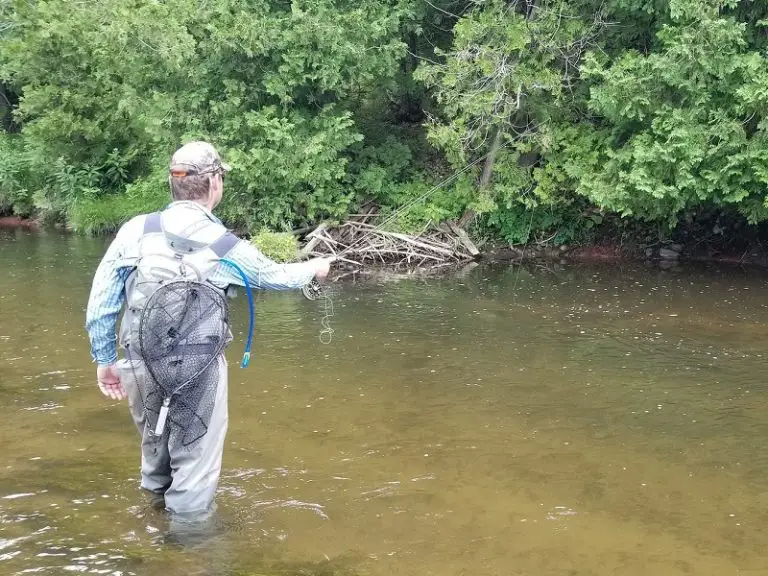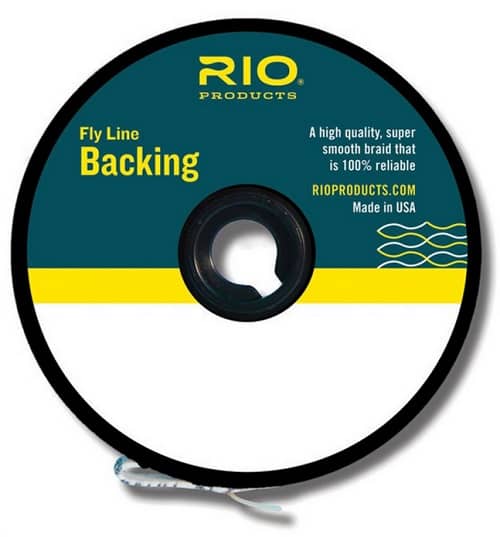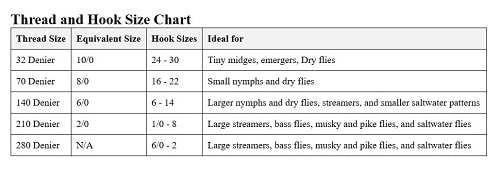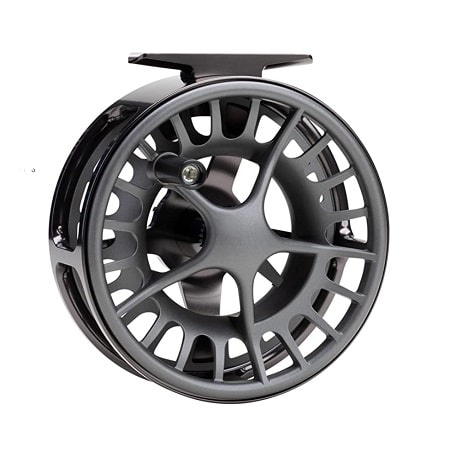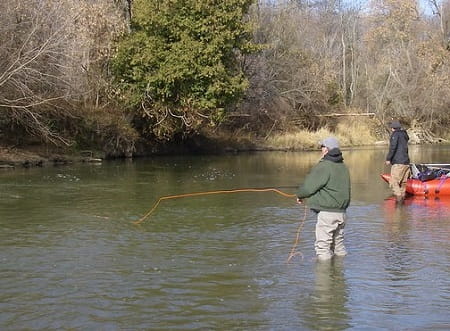Best Spey Lines 2025: A Guide On Spey Fly Fishing Lines

In recent years, there has been a significant surge in the popularity of using two-handed rods and Spey fishing lines for steelhead, salmon, and trout. Once only used for steelhead and salmon fishing in the British Isles and Scandinavia, Spey fishing is now seen on many rivers in the USA and Canada.
Anglers are now using these Spey rods, even on lakes, ocean flats, and in the surf. So, what makes them switch from their beloved single-handed rods?
The answer lies in the many advantages offered by heavy Spey fly lines and the Spey fly rods designed to cast them.
Spey lines provide greater casting distance, enhanced line control, and improved mending capabilities over longer distances. They also make casting large flies and heavy sink tips easy and allow casting with limited back-casting space.
There are three main categories for spey lines, which will be discussed below. There are Traditional Spey Lines, Scandi Spey Lines, and Skagit Spey Lines.
Trout Spey Lines and Rods
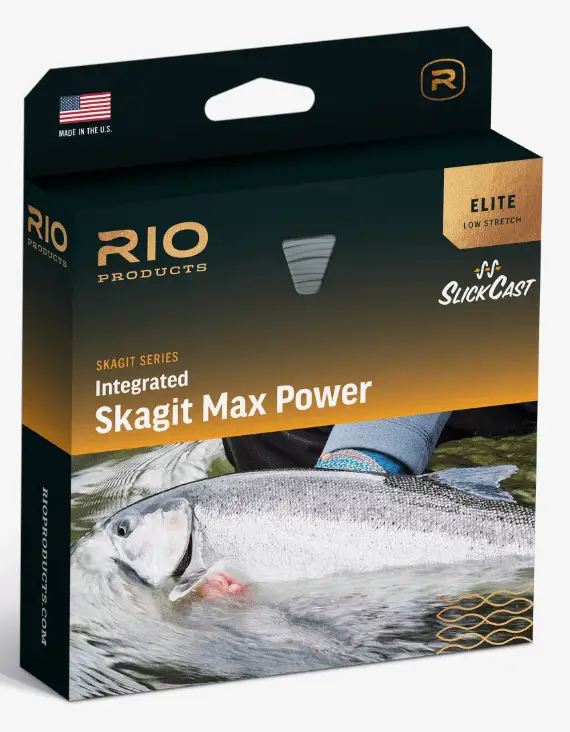
Three-weight to 6-weight is suitable for trout fishing; I’d only use a 6-weight for use on very large rivers, large trout, and big flies with heavy sink tips.
A 3 to 4-weight is perfect for smaller trout rivers.
- RIO INTOUCH SKAGIT TROUT SPEY SHOOTING HEAD – Check Price
- SCIENTIFIC ANGLERS SPEY LITE SKAGIT HEAD – Check Price
- RIO ELITE INTEGRATED TROUT SPEY LINE – Check Price
Steelhead Spey Lines and Rods
For Great Lakes steelhead fishing, Spey lines and spey rods in the 6 to 7-weight size are ideal for most rivers. Upsize to an 8-weight for very large rivers.
For West Coast steelhead rivers, I follow these guidelines:
- Small West Coast Rivers of 50 feet wide or less, 7 or 8-weight Spey lines.
- For large West Coast rivers, 50 feet or wider, I suggest using 8 and 9-weight Spey lines.
- RIO ELITE SKAGIT MINI-MAX POWER SHOOTING HEAD – Check Price
- OPST COMMANDO PURE SKAGIT SHOOTING HEAD – Check Price
- Elite Skagit Max Launch – Check Price
Salmon Spey Lines and Rods
For great lakes salmon fishing, Spey lines and Spey rods in the 7 to 8-weight size is ideal for most rivers. Upsize to a 9-weight for very large rivers.
For West Coast salmon rivers, I follow these guidelines:
- Small West Coast Rivers of 50 feet wide or less, 8-weight Spey lines and rods are good.
- For large West Coast rivers, 50 feet or wider, I suggest using 9 and 10-weight Spey lines.
- Elite Integrated Skagit Max Power – Check Price
Best Scandi Lines To Consider
- RIO InTouch Scandi 3D Shooting Head
- Scientific Anglers // Spey Lite Integrated Scandi Line
- RIO Scandi VersiTip Fly Line
- RIO Scandi Shooting Head
- Rio InTouch Mid-Head Spey Line
Best Skagit Spey Lines To Consider
- RIO Elite Skagit Max Launch Shooting Head
- RIO InTouch Skagit Max GameChanger
- OPST Commando Pure Skagit Shooting Head
- Rio InTouch Short Head Spey Fly Line
- RIO Skagit Launch heads
- OPST Commando
These lines are designed specifically for their respective casting styles and offer excellent performance in various fishing scenarios.
Taking The Confusion Out Of Spey Lines
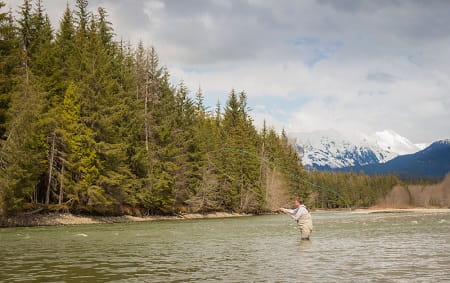
However, the rapidly evolving designs of Spey fly lines have created a challenge for both experienced Spey anglers and beginners.
There is a lot of confusion about spey lines and which ones are the best spey lines to use in different situations.
We love to use and recommend spey lines from only a few select companies. RIO Products, Scientific Anglers, OPST, and Airflo.
All are leading innovators in Spey fly line designs, providing anglers with the best options.
Understanding Spey Line Weights
The rating system for two-handed rods and lines is one of the most confusing aspects for fly fishers transitioning to Spey casting.
While single-handed rods are typically rated on a scale from #1 to #12, the rating for two-handed rods falls within the range of 4 to 12.
What’s important to know is for you to get good and easy casts with a Spey Rod, the weight of the line, which is measured in grains, needs to be matched with the rod. Today, for most fly rods you buy, you can find the ideal grain weight included with the rod or visit the rod manufacturer’s website.
However, the weight required to load a two-handed rod is significantly higher due to its increased power, so you can’t simply use a single-hand 8-weight line for an 8-weight spey rod. Instead, you must purchase a Spey line or upsize a single-hand line by 2 or 3 sizes.
A single-handed rod rated for a #8 line loads effectively with 200 to 300 grains. In contrast, a #8 two-handed rod requires between 450 and 600 grains to load for Spey casting. The specific weight range depends on the casting style employed.
It’s important to note that a regular WF8 line will not adequately load a #8 two-handed rod. Furthermore, Spey lines often have multiple numbers indicating their size.
But what size Spey Line and Rod Do You Need?
The Spey line and rod that you need will depend on the species of fish, the size of the rivers you fish, the size of the flies, or the sink tips you use. As a guideline, I do this for trout, steelhead, and salmon:
Understanding the AFTMA Standard in Spey Lines
The AFTMA standard plays a crucial role in ensuring consistency in line weights across different manufacturers. It provides a reference point for fly line weight, allowing anglers to choose lines that will load their rods uniformly.
However, it’s important to understand that the AFTMA standard varies between single-handed and two-handed lines.
In Spey lines, there are four categories under the AFTMA standard: H, S, M, and L.
These categories are associated with shooting heads, short belly Spey lines, mid-length belly lines, and long belly Spey lines, respectively. Each category has a different measurement length that determines the line weight.
For instance, “H” stands for shooting heads and is measured at 40 ft, while “S” represents short belly Spey lines and is measured at 55 ft. “M” corresponds to mid-length belly lines measured at 65 ft, and “L” indicates long belly Spey lines measured at 75 ft.
It’s important to note that the length of the belly in a spey line influences its weight distribution. The weight is concentrated in the back end of the head, providing the necessary load for the rod during the D-loop formation. A long, fine front taper minimizes drag when the line rests on the water, known as “The Anchor,” before the forward cast.
The following chart illustrates the difference in line weights between single-handed and two-handed AFTMA standards. The numbers represent the weight in grains at the designated “weigh point.”
Additionally, it’s worth noting that the two-handed standard allows for a plus or minus tolerance of 30 grains, whereas the single-handed standard has a tolerance of plus or minus 6 to 12 grains (depending on the size). For instance, a spey line labeled “S8” would be acceptable if it weighed between 500 and 560 grains.
Understanding Taper in Spey Lines
Most Spey lines follow a simple taper design to optimize their performance during casting. The line requires weight at the back of the belly to load the rod effectively, creating a “D-loop.” Simultaneously, a fine front taper minimizes drag when the line rests on the water during the forward cast’s initiation.
A typical Spey line design incorporates these characteristics, with most of the weight concentrated in the back end of the head and a long, fine front taper:
The head length significantly affects the amount of line required outside the rod during casting. Longer belly lines necessitate ample space behind to generate a sufficiently large D-loop that loads the rod. For effortless casting, approximately 30 ft of space is needed.
A shorter to medium head length may only require around 15 ft of space behind.
However, space behind is not the only factor to consider when choosing the appropriate head length. Other factors that influence your choice include your casting ability, the length of your rod, the use of sinking tips, and the need for stripping flies.
Casting ability is crucial since longer head lengths require more skill to handle effectively. A shorter rod has less lift compared to a longer rod, so the head length must be adjusted accordingly.
Bringing a long belly line to the surface can be challenging when using sink tips or heavy flies. In such cases, a shorter-headed line positions the sink tip closer to you, making it easier to lift it out of the water.
If you engage in stripping flies, particularly for certain fishing techniques, short head lines are ideal. You must strip the line, bringing it up to the rod tip before making a cast.
It’s essential to consider these factors when selecting the appropriate head length for your specific needs. Keep in mind that longer belly lines require more space and are best suited for experienced casters, while shorter head lines offer advantages in certain fishing situations but may require managing the slack coils of running line.
Comparing Line Tapers
While most Spey lines follow a basic taper design, variations in head length and weight distribution can significantly impact their performance. Longer head lengths require more line outside the rod, while shorter head lengths necessitate less space.
When comparing line tapers, it’s essential to consider your casting proficiency and the specific fishing scenarios you’ll encounter. Here’s a breakdown of some popular line tapers:
Scandi Lines
Scandi lines, commonly found on Scandinavian salmon rivers, were initially designed for casting in tight quarters.
They feature long front tapers, allowing gentle presentations to avoid startling wary salmon in clear waters.
Although primarily used for light, unweighted flies for salmon or steelhead, advancements in technology enable Scandi lines to cast larger flies as well.
Scandi Spey lines offer versatility in various fishing applications, including dry fly fishing for trout, salmon, or steelhead, sinking poly-leaders with small to medium/large streamers, and moderate saltwater fishing with small to medium-sized flies.
Pros:
- Ease of casting in tight areas
- Versatility across the water column
- Long, smooth, and powerful casts at a distance
- Relatively easy to learn
Cons:
- Not as powerful as Skagit lines
- Limited in turning over thicker tips or heavy flies
Skagit Spey Lines
Skagit casting is a more recent style of Spey casting, named after the Skagit River in Washington.
Skagit lines feature even shorter head lengths compared to Scandi Fly lines and Traditional Long Belly Spey lines.
This exceptionally short head length allows for long casts in extremely tight situations, requiring minimal space behind.
Skagit lines have a high weight per inch due to their concentrated weight in the front of the line. This characteristic makes them particularly efficient for lifting heavy, large flies or deeply sunken tips.
I also find that Skagit lines are the easiest for my clients to learn to cast.
Skagit lines were originally developed for fishing large steelhead flies with heavy sink tips but are now widely used for trout, salmon, and other species or anytime you need heavy sink tips and casting large flies.
Pros:
- Ability to cast easily in tight areas
- Suitable for deep-water situations with heavy tips
- Ideal for casting big flies long distances
- Relatively easy to learn
Cons:
- Not as smooth to cast as Scandi lines
- Presentations with smaller flies or on flat surfaces may suffer
Skagit Cheaters
Skagit Cheaters are additional extension pieces designed to fine-tune the head length ratio for specific rods. The use of Skagit Cheaters is based on maintaining a consistent ratio between the rod length and the head length of the line. This ratio ensures a consistent casting stroke regardless of the rod length.
For example, if a caster prefers a ratio of 3.5:1 (rod length to head length), a 12-foot rod would require a 42-foot line for a comfortable casting experience.
If using a Skagit line with a 27-foot head, adding a 15-foot sink tip would yield a total head length of 42 feet, eliminating the need for a Skagit Cheater.
However, if the same caster switches to a 14-foot rod with a desired ratio of 3.5:1, a total head length of approximately 49 ft is required. In this case, a 27-foot Skagit line plus a 7.5-foot Skagit Cheater would bring the head length to 49.5 feet, achieving the desired ratio.
While this concept may be confusing for beginners, understanding and applying the correct head length ratio can help develop a consistent casting style regardless of the rod length used.
Saltwater Spey Line Applications
The use of two-handed rods for overhead casting in saltwater environments has gained popularity in recent years. These rods offer advantages when throwing large flies into the wind and over incoming surf. When choosing a line for overhead casting with a two-handed rod, two key considerations come into play.
Firstly, the head length should be shorter compared to Spey casting to maintain a stable back loop and retain line speed for longer-distance shooting.
Secondly, the line weight for overhead casting should be lighter than for Spey casting. Unlike in Spey casting, where only a portion of the line weight loads the rod, overhead casting relies on the entire line length to load the rod during the back cast.
For saltwater fishing, be sure you use a line designed for saltwater, and be sure your spey reel and your spey rod are designed for saltwater. It offers a shorter head length and lighter line weight, enabling long casts in tight spaces and efficient performance against wind and surf.
Exploring The World Of Spey Fly Fishing Lines: Conclusion
Although it may seem a bit confusing, it’s a simple matter of determining if you should fish with a Scandi Spey line or a Skagit Spey line and then match your Spey line to your Spey rod by ensuring that the grain weight of the line is right so the rod loads and casts well.
Tight Lines
Graham


